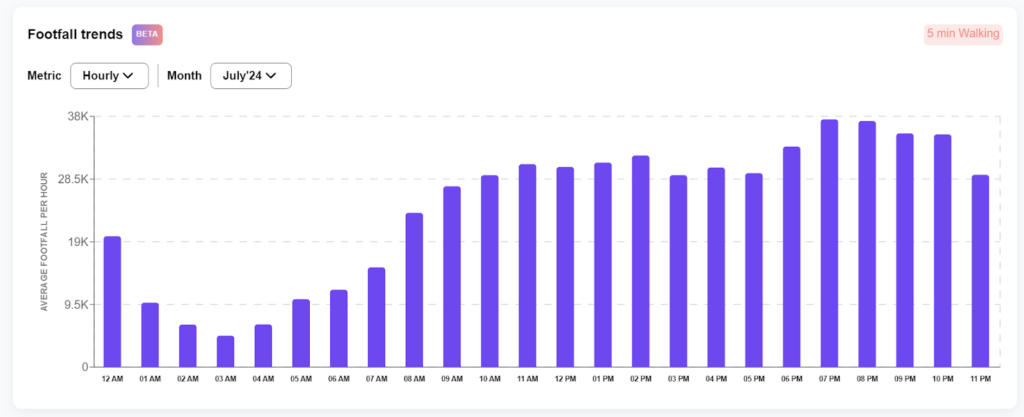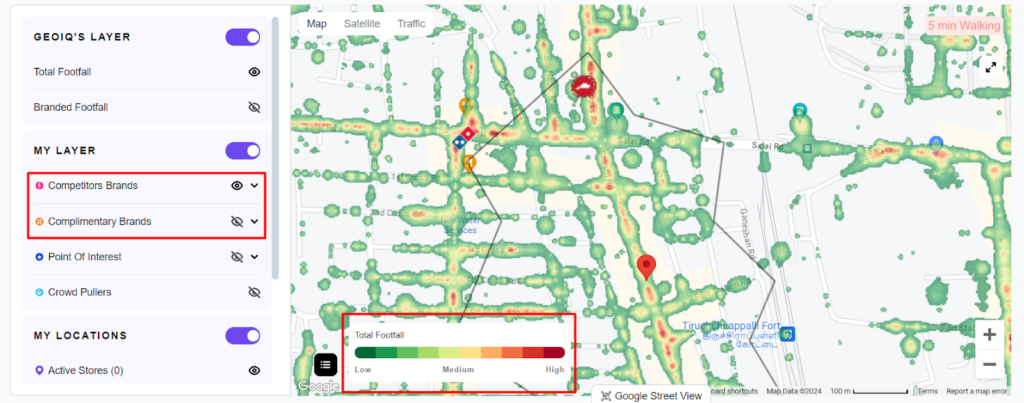Opening a new set of retail stores requires intelligent decision-making to ensure that you have picked ideal locations to maximize revenue and avoid the risks of failure. But it does not end there, once you have opened your retail stores, the efforts should align to manage them successfully. Effective retail store management is crucial to achieving sustainable growth.
From managing daily operations to ensuring the right products reach the right customers, mastering the complexities of retail store management can significantly impact profitability, customer satisfaction, and long-term brand loyalty. Here, we explore ten essential strategies for successful retail store management that can elevate your business.
1. Understand your target audience
To effectively manage a retail store, you must have a deep understanding of your target audience. This involves knowing their preferences, purchasing behaviors, and the factors influencing their decisions. GeoIQ’s location intelligence solutions can help retailers gain valuable insights into their audience’s demographics and shopping habits, enabling data-driven decisions and personalized marketing efforts.
2. Know where your shoppers are coming from
Hyper-locally target your marketing efforts in the catchments your shoppers are coming from. Such marketing optimizations help improve ROI and maximize conversions from your digital and offline campaigns. Placing promotions and activations in these regions will also help drive conversions and turn-around in the store. With GeoIQ’s AI-driven platform, you can get an understanding of the total addressable market, the trade area spread for a store, and the shopper origins.

3. Monitor and respond to foot traffic trends
Footfall is a major identifier of the success of a store in a specific location. When you assess the presence of competing and complimentary brands in the vicinity you can understand the type of footfall that frequents a locality.
By understanding foot traffic patterns, you can gauge the effectiveness of your store location, layout, and marketing efforts. GeoIQ’s footfall analytics at the street level enable you to measure customer density around your store, giving insight into peak hours, customer hotspots, and times to optimize staffing and promotions. You can have a simplified representation of footfall in the form of hourly, daily, and weekly footfall numbers.

4. Optimise store layout and visual merchandising
The layout and appearance of your store greatly influence the customer experience and buying behavior. A well-thought-out store layout can drive traffic flow, highlight high-margin products, and encourage impulse purchases. Use strategies such as product grouping, effective signage, and an uncluttered layout to make the shopping experience pleasant.
5. Leverage technology for product placement across stores and inventory management
Placing the right products in the right stores is critical for streamlined inventory management and maximizing sales potential. Imagine having the ability to predict which stores will sell specific products faster based on customer preferences, pricing, and style. GeoIQ’s advanced analytics make this possible by providing actionable insights into your existing stores, helping you match products to locations with the highest likelihood of success.
Efficient inventory management ensures you maintain optimal stock levels, avoid overstocking or understocking, and streamline your supply chain. Platforms like GeoIQ enable real-time demand forecasting, empowering retailers to adjust inventory levels dynamically and minimize losses from unsold products.
Moreover, GeoIQ helps you optimize product placement and merchandise mix for each store by analyzing location-specific characteristics. For instance, identify stores where premium products will perform better, locations ideal for trendy or fashionable items, or areas where economic products are in higher demand. This data-driven approach ensures your inventory aligns with customer preferences, maximizing profitability and enhancing the shopping experience.
6. Streamline Operations with Retail Automation
Automation is transforming retail store management by streamlining critical tasks such as inventory management, payment processing, and customer engagement. Automated systems enable real-time tracking of stock levels, ensuring optimal inventory while reducing manual errors. Advanced point-of-sale (POS) systems and self-checkout kiosks speed up transactions, improving customer experience and operational efficiency.
Additionally, automation enhances customer engagement through chatbots, personalized marketing, and loyalty programs, allowing retailers to stay connected with shoppers seamlessly. By reducing workload and boosting accuracy, automation not only improves efficiency but also frees up resources for strategic growth initiatives.
7. Embrace Omnichannel Retail Strategies
Today’s consumers expect a seamless experience across online and offline channels. Embracing an omnichannel strategy allows your customers to browse online and shop in-store or vice versa. Ensure that your inventory, pricing, and promotions are synchronized across all channels for a consistent customer experience. This integration can increase customer satisfaction and drive loyalty. By opening more channels to be in touch with consumers, you tend to avoid gaps where your consumers might switch to competitors.
8. Use Location Intelligence for Site Selection and Expansion
The success of a retail store often begins with choosing the right location. Location intelligence tools like GeoIQ’s RetailIQ can help retailers select prime locations based on factors like target market presence, foot traffic potential, and competitive landscape. Understanding these factors reduces the risk of opening a store in an unprofitable area and aids in future expansion planning.
Related: Choosing the Right Store Location with Data
9. Analyze Competitors and Market Trends
Staying competitive requires a continuous analysis of market trends and competitor strategies. GeoIQ’s insights can provide a clear view of the local market landscape, including competitors’ foot traffic, customer demographics, and growth trends. This data helps retailers refine their strategies, adjust marketing tactics, and respond proactively to changing market dynamics.

Effective retail store management is about more than just keeping shelves stocked and customers happy. It requires a blend of smart data-driven decisions, technology, and a customer-centric approach.
Platforms like GeoIQ can provide retailers with actionable insights into location-based demand, audience demographics, and real-time trends that can empower smarter retail store management decisions.


